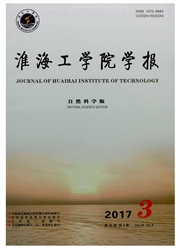

 中文摘要:
中文摘要:
在轮叶黑藻、狐尾藻与双酚-A(BPA)共存的微系统中,利用液相色谱-质谱联用仪(LC-MS)、气相色谱-质谱联用仪(GC-MS)等仪器,研究了轮叶黑藻、狐尾藻对不同质量浓度BPA(1~20mg/L)的降解速率和降解产物。结果表明,BPA能被轮叶黑藻及狐尾藻降解,但不能被自然光降解,也不能被生存于轮叶黑藻或狐尾藻环境中的微生物单独降解。轮叶黑藻、狐尾藻对BPA降解半浓度周期均少于15d。鉴定出2-(4-苯酚)-2(3,4-邻二苯酚)丙烷和2,2-二(4-苯酚)丙醇可能是轮叶黑藻、狐尾藻降解BPA的两种产物。另外,狐尾藻对BPA的耐受性要低于轮叶黑藻,说明轮叶黑藻比狐尾藻更适合用于受BPA污染的水体的净化。
 英文摘要:
英文摘要:
In a microcosm system where Hydrilla verticillata,Myriophyllum verticillatum and Bisphenol A(BPA) coexist,we studied the speed and products of phytodegradation of BPA within the concentration of 1—20 mg/L with the help of liquid chromatography-mass spectrometer(LC-MS) and gas chromatography-mass spectrometer(GC-MS).Results showed that BPA could be phytodegradated by Hydrilla verticillata Myriophyllum verticillatum.However,it could not be phytodegradated by natural light or microbes living in the culture medium of Hydrilla verticillata Myriophyllum verticillatum.The half life of phytodegradation of BPA was less than 15 days.2-(4-hydroxypheny)-2-(3,4-o-dihydroxypheny) propane and 2,2-bis(4-hydroxypheny) propyl alcohol were identified as two possible products of BPA.The results also showed that Hydrilla verticillata was better than Myriophyllum verticillatum in removing emergent BPA pollution.
 同期刊论文项目
同期刊论文项目
 同项目期刊论文
同项目期刊论文
 期刊信息
期刊信息
